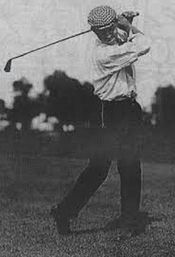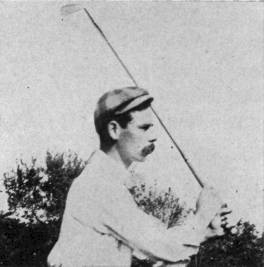
Horace Thomas Rawlins was an English professional golfer who won the first U.S. Open Championship in 1895.

Shinnecock Hills Golf Club is a links-style golf club located in an unincorporated area of the Town of Southampton on Long Island, New York, situated between the Peconic Bay and the Atlantic Ocean.
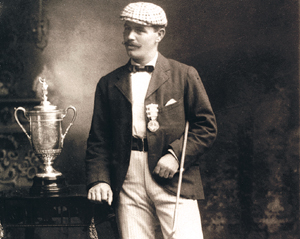
James Foulis, also known as James Foulis Jr., was a Scottish professional golfer who won the second U.S. Open in 1896. He also finished tied for third in the inaugural 1895 U.S. Open held at Newport Golf Club in Newport, Rhode Island.

Craig Ralph Wood was an American professional golfer in the 1930s and 1940s, the winner of 21 PGA Tour titles including two major championships and a member of three Ryder Cup teams (1931, 1933, 1935).

The 2004 United States Open Championship was the 104th U.S. Open, held June 17–20 at Shinnecock Hills Golf Club in Shinnecock Hills, New York. Retief Goosen won his second U.S. Open title, two strokes ahead of runner-up Phil Mickelson, the reigning Masters champion. The purse was $6.25 million with a winner's share of $1.125 million.
The 1986 U.S. Open was the 86th U.S. Open, held June 12–15 at Shinnecock Hills Golf Club in Shinnecock Hills, New York. Raymond Floyd won his fourth and final major, two strokes ahead of runners-up Chip Beck and Lanny Wadkins. It was Floyd's only U.S. Open title and he became its oldest winner, a record he held for four years.

Henry James Whigham was a Scottish writer and amateur golfer. He won the U.S. Amateur golf tournament in 1896 and 1897. Following his first win in the U.S. Amateur, he wrote a golf instruction book. In 1896 he finished fifth in the U.S. Open held at Shinnecock Hills Golf Club, Southampton, New York.
The 1896 U.S. Open was the second U.S. Open, held July 18 at Shinnecock Hills Golf Club in Southampton, New York. James Foulis won his only major title, three strokes ahead of runner-up Horace Rawlins, the defending champion. Like the first Open, it was a sideshow to the U.S. Amateur. However, there were 35 entrants and 28 finished the 36 holes.
Alfred John Mengert was an American professional golfer.
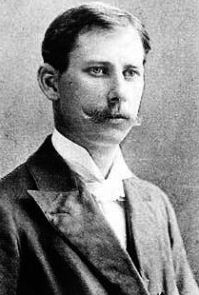
William Dunn, Jr. was an English professional golfer and golf course designer of Scottish descent. Dunn was born in Blackheath, London, England in about 1864. His best U.S. Open finish was second in the 1895 U.S. Open. He took home $100 as his share of the purse. His best known golf course designs are those found at the Shinnecock Hills Golf Club and the Apawamis Club.
George Douglas was a Scottish professional golfer. Douglas tied for third place in the 1896 U.S. Open, held 18 July 1896 at Shinnecock Hills Golf Club in Southampton, New York.
Andrew Whyte Smith was a Canadian amateur golfer. He finished tied for third place in the 1895 U.S. Open played at Newport Golf Club in Rhode Island and had an identical result in the 1896 U.S. Open, held July 18, 1896, at Shinnecock Hills Golf Club in Southampton, New York.
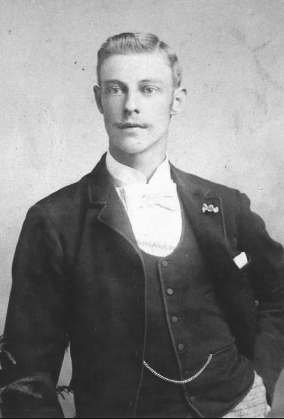
William Henry Tucker, Sr. was an American professional golfer and golf course architect of English birth. Tucker placed seventh in the 1896 U.S. Open, held 18 July at Shinnecock Hills Golf Club in Southampton, New York.
Robert Black "Buff" Wilson was a Scottish professional golfer who played in the late 19th and early 20th century. Wilson placed ninth in the 1896 U.S. Open, held 18 July at Shinnecock Hills Golf Club in Southampton, New York. He played in the 1897 U.S. Open and finished T11. He had two starts in the Open Championship, in 1890 and 1893, and finished in 22nd and 33rd place, respectively.
William Frederick Davis (1861–1902) was a Scottish professional golfer who designed two of the five charter clubs of the United States Golf Association (USGA) including Shinnecock Hills Golf Club and Newport Country Club. At the time of his death in 1902, Davis was credited as being the first individual to have come to America to make a professional living as a golfer. He was also remembered as leading the movement to establish a championship tournament for professionals.
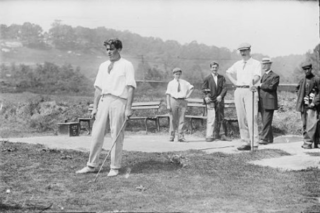
Isaac S. Mackie was a Scottish-American professional golfer who played in the late 19th and early 20th century. He apprenticed as a club maker under George Forrester. Following his brother Jack—who had emigrated to the United States in 1899—Mackie also made the trans-Atlantic journey in 1901. He took a job as professional at Fox Hills Golf Club on Staten Island soon after his arrival and remained in that post until 1914. In 1916, he was appointed the head professional at Canoe Brook Country Club, replacing Louis Tellier. In 1953 he was the head professional at Netherwood Golf Club in North Plainfield, New Jersey.
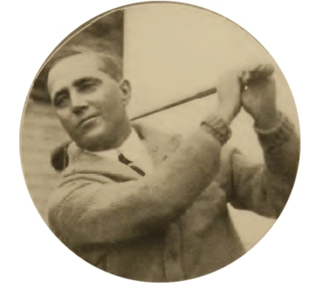
Peter Joseph O'Hara was an Irish-American professional golfer who played in the early-to-mid 20th century. His best major championship finishes were a fifth place tie in the 1920 PGA Championship, a T7 finish in the 1924 U.S. Open, and a T8 result in the 1929 U.S. Open.

The 2018 United States Open Championship was the 118th U.S. Open, held June 14–17 at Shinnecock Hills Golf Club in Shinnecock Hills, New York, about eighty miles (130 km) east of New York City on Long Island; it was the fifth time the U.S. Open was held at this course.

The Shady Rest Golf and Country Club is located at 820 Jerusalem Road in the Township of Scotch Plains in Union County, New Jersey. Established in 1921, it was one of the first, if not the first, African American country clubs in the United States. From 1931 to 1964, it was the home of John Shippen (1879–1968), the first American golf professional and the first African American to compete in the U.S. Open. It was added to the National Register of Historic Places on July 7, 2022, for its significance in entertainment, ethnic heritage, recreation, and social history from 1921 to 1964. The township acquired the property in 1938 and converted it to a public golf course in 1964.
Luis Gerardo Gagne is a Costa Rican professional golfer who is best known for finishing low amateur at the 2018 U.S. Open at Shinnecock Hills.
